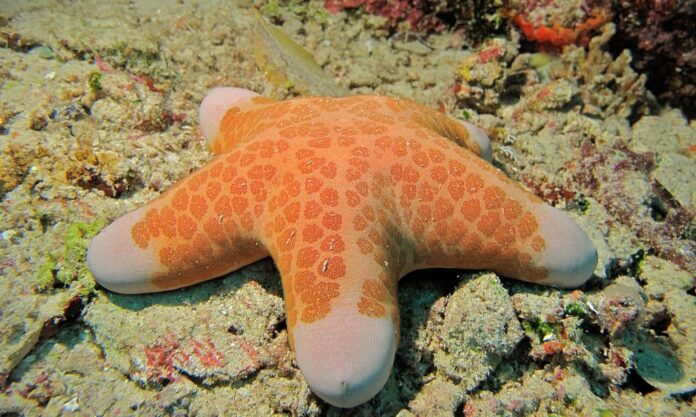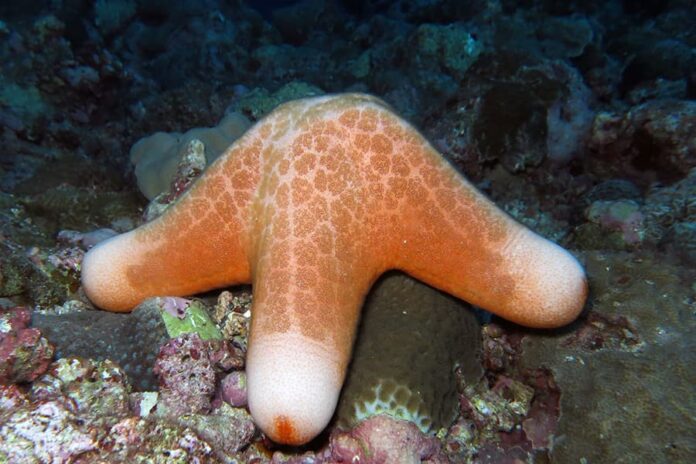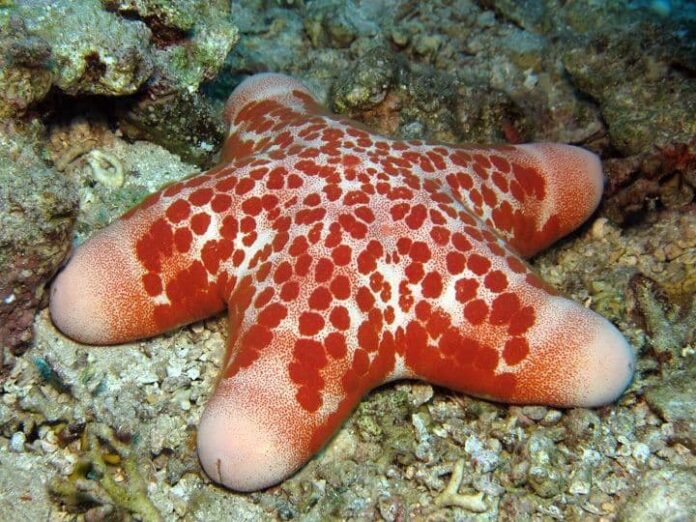Granulated sea star goes by proper nicknames as big-plated sea star or doughboy starfish, but no, people don’t call them that. People call them based on what they see, so it is either a 5-head penis sea star or a penis starfish. Starfish has always been an interesting sea animal, and this one takes it to a different level; among dirty-minded people like my friends. So I guess it is nice to learn a thing or two about them, let’s find out below.
1Appearance

Choriaster is a large sea star species with a convex body and 5 short arms that have round tips. The arms of this starfish make it look chubby, and those arms resemble a human’s penis; hence the nickname. What makes this starfish look even more like a penis is the pale color on each arm’s end. Being a large sea star, it can grow up to 27 centimeters big. It has brown papillae radiating out from the center that can also be gray, yellow, or red.
2Feeding & Habitats

Just like other starfish, the granulated sea star is also carnivorous with its mouth under its body. A granulate sea star absorbs food by forcing its stomach out of its mouth onto the food. The menu of this sea star species consists of algae, coral polyps, detritus, small invertebrates, and more. The most interesting part is that it also feeds on carrion and dead sea animals as well.
Granulated sea star species is widely distributed in a number of tropical waters around the world. Some of the most common areas are East Africa, Fiji, the Great Barrier Reef, the Indo-Pacific region, Papua New Guinea, and the Red Sea. In those areas, they live in shallow waters ranging from 1.5 to 53 centimeters deep.
A group of starfish living together is a constellation. Some of them live individually while others live in constellations along coral reefs or in sandy habitats and among corals and sponges. They are also found on back reefs, external reefs, rubble slopes, and other areas with detritus and rubble.
3Predators & Threats
One of the main predators of this starfish is Triton’s trumpet, a large sea snail species. When it comes to threats, it happens right in the marine water. Ocean acidification not only causes habitat loss but also leads to coral bleaching. Another thing is that the arms of these starfish are susceptible to small parasitic limpets that attach to their underside. This can cause their arms to deform which affects their population.
Related Post: Marine Monsters With A Strange Appearance




